House Post (RBCM 1)
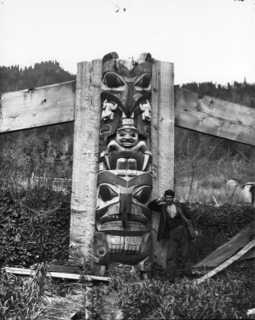
A visitor to Hlragilda Llnagaay leans against the post in 1884. Photograph by Richard or Hannah Maynard. PN05839.
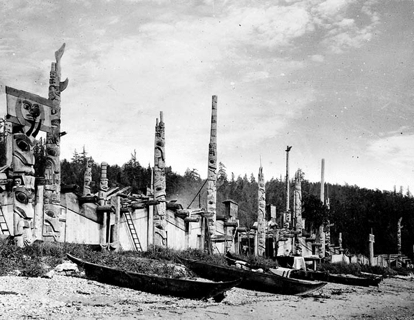
Either this house post or another collected by James Deans at the same time stood inside the second house from the left in this photograph of Hlragilda Llnagaay take in 1878 by George M. Dawson.
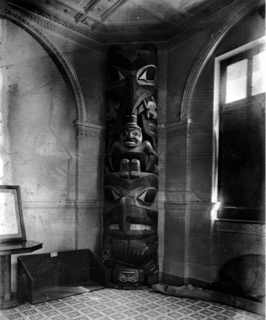
The post on display in the Provincial Museum, which was then in the BC Legislature Building, probably in the 1920s. G-05051.
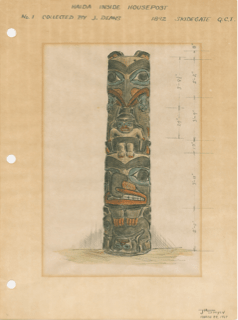
John Smyly made two colour sketches of the post in 1967.
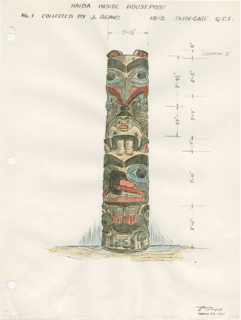
John Smyly made two colour sketches of the post in 1967.
The first entry in the Royal BC Museum’s ethnology catalogue is this house post from Hlragilda Llnagaay (Skidegate village), part of a collection that James Deans acquired on Haida Gwaii in 1892 and sold to the Provincial Museum for $298 the following year. Deans was a retired employee of the Hudson’s Bay Company with an interest in Northwest Coast cultures, who published a book called Tales from the Totems of the Hidery in 1895. Charles F. Newcombe’s notes for the museum’s 1898 catalogue say that this post supported a roof beam inside a house called The House Which Chiefs Peep At From Concealment (that is, feeling their inferiority) or House Chiefs Peeped At From A Distance. It belonged to a chief of the Rotten House division of the Eagles of Skidegate whose name could be translated as Though Younger Brother Must Be Obeyed. Newcombe gives the owner’s name as Nangdjingwas (Nany Tsihgwaas) and his wife’s name as Queskun unandas (Keskun Ganandas). The post was made by “one of the Edenshaws of Masset” and carved and erected in Skidegate about 1860. This is the family of the great Haida artist Charles Edenshaw, who may have created this exceptional carving with his uncle, the carver Albert Edward Edenshaw.
The post shows some of chief’s crests. Raven, with two frogs hanging out of its beak, is at the top. Below is a crouching human figure, possibly a chief, wearing a hat topped with two cylinders (skil) that denote wealth obtained through potlatching. The figure’s legs appear to emerge from Raven’s tail. It clutches the ears of a creature with a recurved beak, called in Newcombe’s catalogue the mythical Mountain Hawk. It holds Killer Whale in its talons. At the bottom is a small upside-down head.
Do you have a story to share about this item? Add your voice to the community.